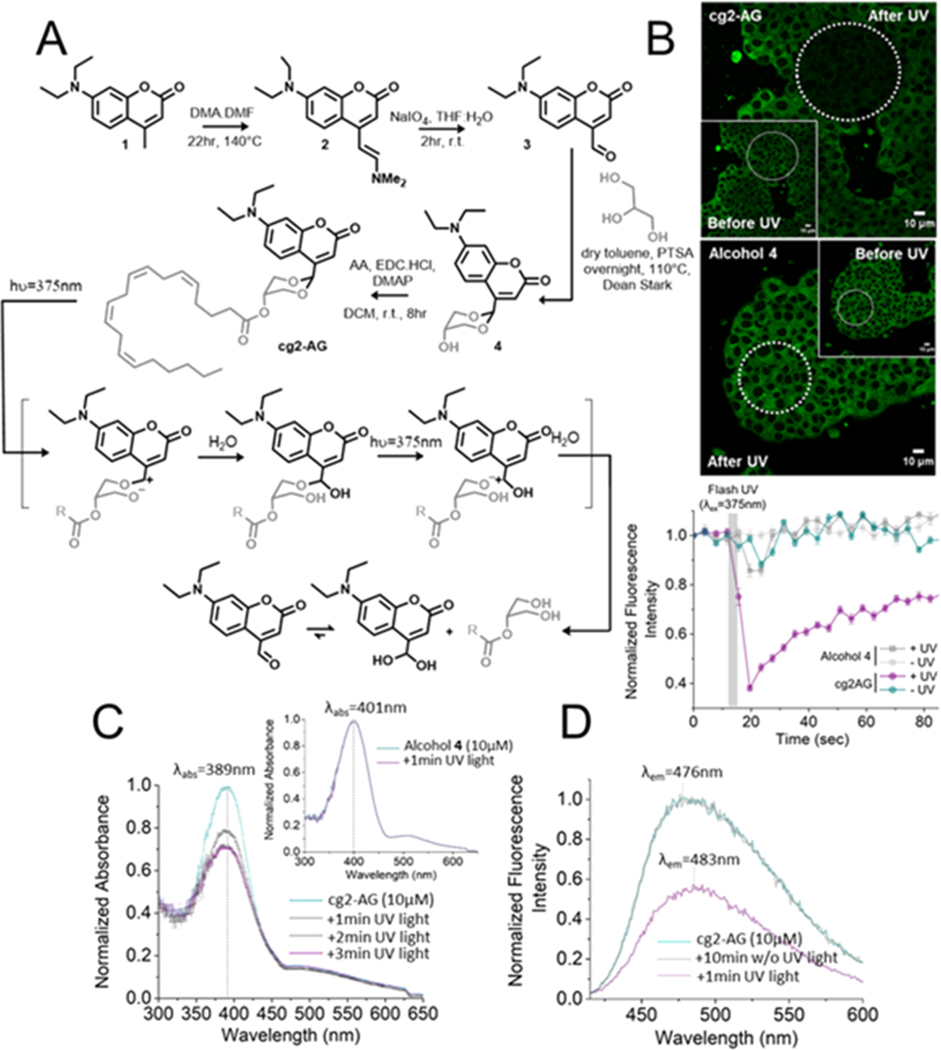Figure 1.
(A) Chemical synthesis of caged 2-arachidonoylglycerol (cg2-AG) and proposed solvent-assisted mechanism of photorelease. (B) Confocal micrographs of live MIN6 treated with 10 μM cg2-AG or alcohol 4, before and after flash photolysis in a circular region of interest (λex = 405 nm, λuncaging = 375 nm). Normalized fluorescence intensity of live MIN6 cells treated with cg2-AG (10 μM) or alcohol 4 in ± UV. The reduction in fluorescence after photolysis is likely due to (C) UV/vis spectra of cg2-AG (10 μM in H2O) ± UV light photolysis (from 1 to 3 min irradiation, 1 kW xenon lamp equipped with a 350 nm long-pass filter). Top right inlet. UV/vis spectra of alcohol 4 under the same conditions is not affected by the presence of light. (D) Fluorescence emission spectra of cg2-AG (10 μM in H2O, λex = 405 nm), ± UV light photolysis.

